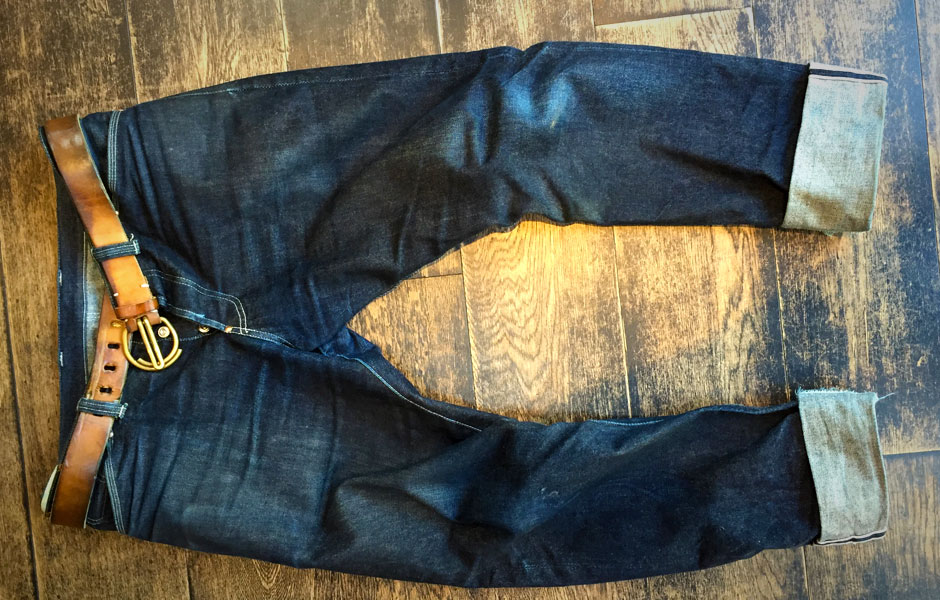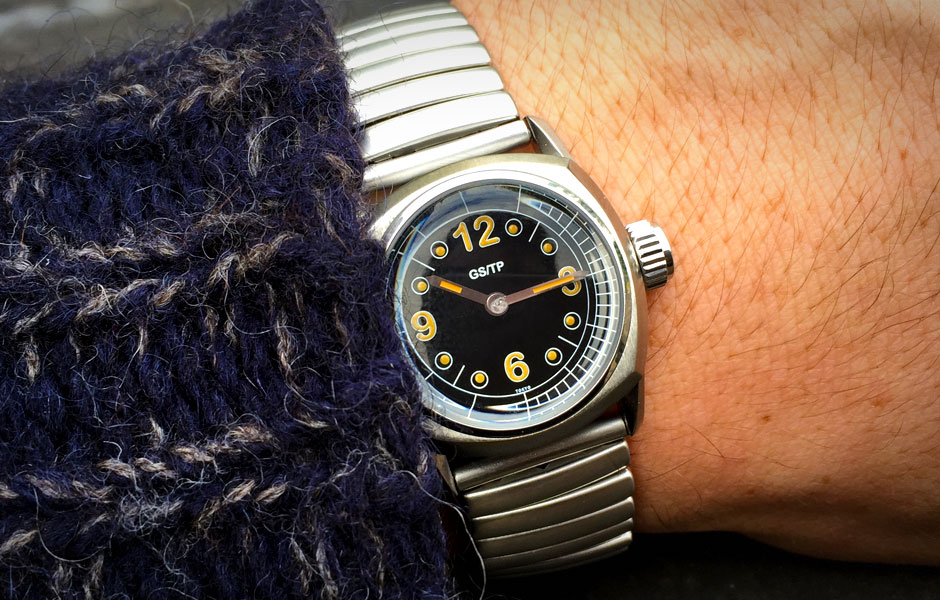- 1. Tender
- 2. Tender
- 3. Tender
- 4. Tender
- 5. Tender
- 6. Tender
- 7. Tender
- 8. GS/TP
- 9. GS/TP
- 10. GS/TP
- 11. GS/TP
- 12. Tender
Named for the coal and water truck that is coupled to the back of a railroad steam engine, Tender is a U.K. based and made fashion line that marries jeans, workwear, high-quality indigo and British tailoring. Menswear designer William Kroll, a veteran of the Japanese denim brand Evisu and a graduate of the acclaimed fashion school Central Saint Martins (where he now teaches), created it 11 seasons ago after he visited Kojima, Japan where he learned traditional indigo dyeing and production techniques from a longtime master.
Sold online and in boutiques across the globe, Tender now includes accessories and ceramic items as well as a lower priced sub-line called Sleeper. Kroll also just launched an extremely cool line of vintage, military inspired watches called GS/TP. He recently caught up with The Manual about his various and oh-so covetable collections….
How would you describe the overall aesthetic and ethos of Tender?
I love vintage clothes and manufactured objects and I really enjoy and respect the reproduction brands, who pick apart everything that went into a particular product, then remake it step by step, but I’ve always wanted to do something a little different with Tender. There are references to vintage workwear, certainly, but there are also antique and historical ideas in there, and stuff from more formal clothing. Increasingly, I also enjoy abstracting the construction of things, and drawing up patterns by what makes sense from a construction point of view, rather than by starting with a sketch and then working out to make it. This means that quite often a garment design will start out with a pattern and I won’t really know how it will look until it is made.
What are Tender’s key items?
I think all designers are susceptible to a touch of megalomania, to an extent at least, and as much as that applies in my case I’d say that I don’t put out anything that I don’t consider to be an interesting interpretation of its type. So a T-shirt or keyring should be as good an example of a T-shirt or keyring as a pair of jeans or knitted pullover is of its genre.
A lot of the items in any given production are either evolutions or carryovers from previous seasons. Tender started out with a pair of jeans, (Type 132, still in the line pretty much unchanged) and the jeans fits are always particularly special for me. For the current production, autumn/winter 2015, there’s a new fit, type 127: it’s slimmer than previous shapes, and something I’d not wanted to do in the past, but I tried it out and it worked really nicely with the weight of denim and the details.
Who is the Tender customer?
Tender is still a really tiny brand – it’s just me, working from a studio at the bottom of the garden at home. As such, it’s a bit risky to try to extrapolate too much about the kind of people who buy my things. But maybe that’s the answer – they’re all individuals. I’ve developed really nice relationships through e-mail with quite a few customers, and they’re all sorts – all over the world, men and women, all ages, all types of occupation.
Why is it so important that the product be made in England?
I’m British, and when I started Tender I wanted to do something which had an identity that was different to the many excellent American and Japanese brands which inhabit a similar aesthetic. I think the environment in which something is made has a big effect on how it feels (especially when the hand of the maker is very evident in its construction, as I’ve always been keen should be the case). It’s never a good idea to generalize, but I feel that British making has a certain warmth and friendliness to it which sets it apart from other countries.
How has the line evolved?
I’m in the lovely position of being able to try out new things whenever it seems like a good idea – because it’s just me I don’t have to worry too much about repeating something I like, or making something new even if it isn’t necessarily going to sell a lot. So in some ways the brand’s evolved a lot and in some ways it’s very similar to how it started. It’s certainly got a lot bigger – the first production was a pair of jeans, a jacket, a belt, and a T-shirt and there are now hundreds of things available.
You also offer ceramics and brass items. Why not just stick to clothing?
The accessories started with our first online store. We wanted to try building a web shop, but I didn’t want to start off with the full clothing line. I also had loads of ideas for nice non-clothing products, but some of them wouldn’t be appropriate to sell to other shops so it seemed like a nice way to go. The reaction was really good, though, so the accessories are mostly now part of the main line, too. I hope the qualities and personality of the ceramic, brass, glass, leather things match up with the feeling of the clothes.
How and when did Sleeper start and what are some of its best offerings?
Sleeper is a nice side-project to Tender. The mainline garments have a lot of ideas and techniques in them (even if, hopefully, the pieces themselves remain quite simple to look at), but I wanted to do something a bit more strictly workwear reproduction. Tender started off with references to vintage British Rail uniforms and I have a small archive of deadstock and used British Rail clothing from the first half of the 20th century.
Sleeper is a concise collection of reproduction of some of these garments, made in Okayama from Japanese and British fabrics. The shapes and details are all directly taken from the original clothing, but the colors and textures are updated a little. It’s been around for a couple of years now, but it’s intentionally non-seasonal. We keep stock available on the Tender Stores and it’s in a few very nice shops in Japan. It’s priced quite a bit lower than Tender, and is a lot simpler, but the quality and fabrics are great.
What excites most about your new line, the GS/TP watches?
Unlike Sleeper, which is directly connected to Tender, GS/TP is a totally separate brand. I’m a big watch fan, and personally collect old watches. I’ve got quite a few early 20th century military pocket watches from various different makers, which often have the initials G.S./T.P. engraved on the case back. This stands for General Service Trade Pattern (or Temporary Pattern –I can’t find a definitive answer!), and means that the watch is made to Ministry Of Defense design and specifications. They’re a lovely clean layout and design, and I wanted to bring some of that feel into a wristwatch, without it feeling too overtly military. One of the main things about GS/TP is that the watches are small by modern standards – 28mm across. This was a standard size in the ’40s and ’50s, but is now a lot smaller than most of what’s available.
While the diameter’s quite narrow, the case is chunky with thick twisted lugs, a high domed plexiglass crystal and a deep screw-down bubble back – these proportions, along with a relatively wide 18mm strap keep it from looking feminine or delicate. I love how subtle, tiny, change in proportion and detailing can really affect how a watch feels. In that sense I think watches and jeans are very similar.
Where does your creativity and interest in fashion come from?
I’ve always enjoyed making things – originally furniture and bits of woodwork. My grandparents on both sides were very interesting creative people in different ways, and really encouraged me to draw and make things when I was a kid. I made my first garment when I was 14 or so (a pair of cropped ecru canvas judo pants made out of curtain fabric) and kept going. At that point, though, right up until I went on to study menswear at college, clothes were just part of a range of different products I was interested in designing and making, which I guess informs the breadth of the Tender collection now.














